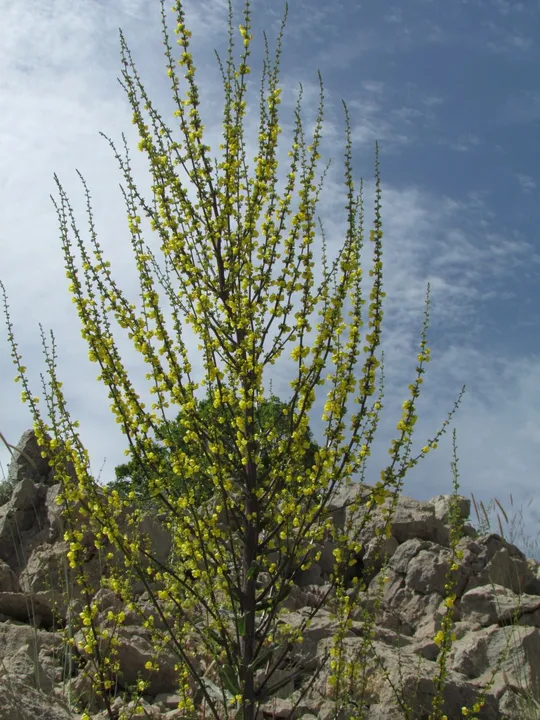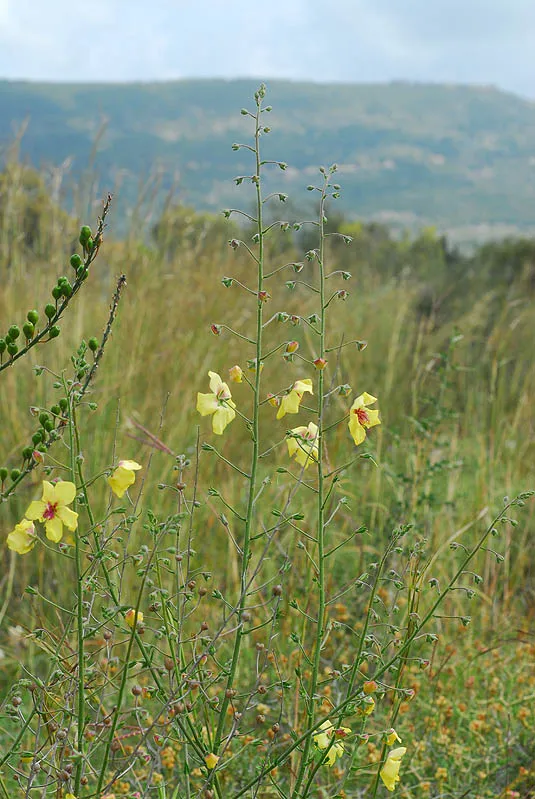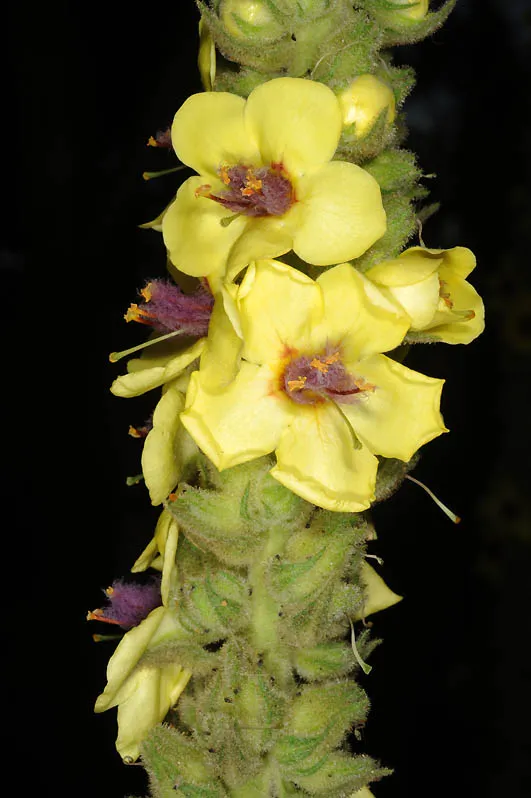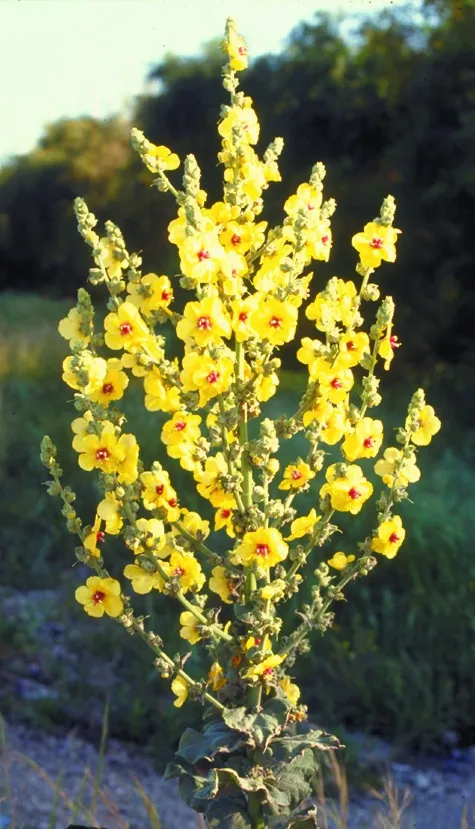Anticharis glandulosa
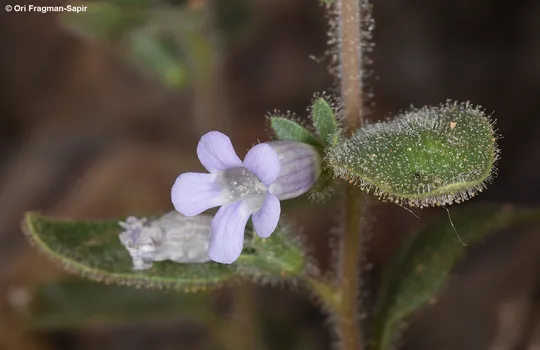
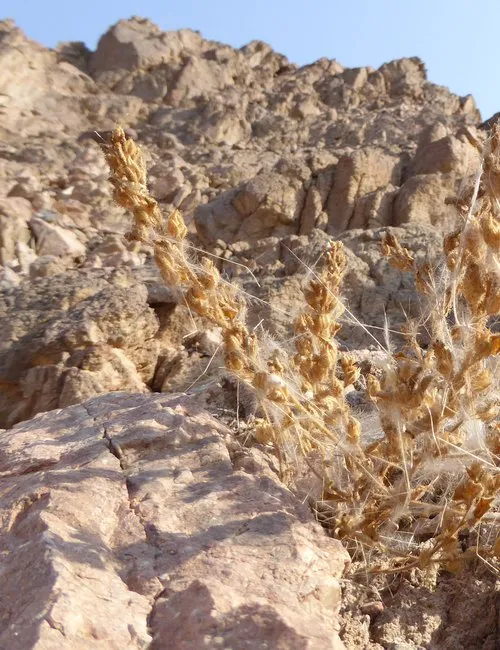
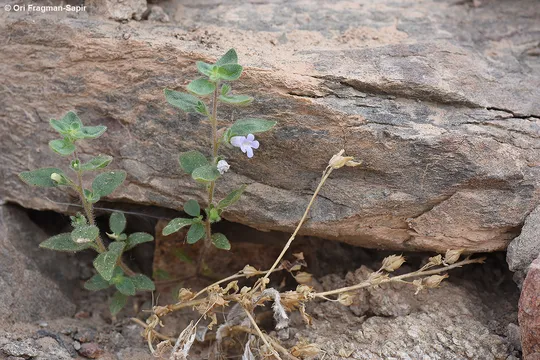
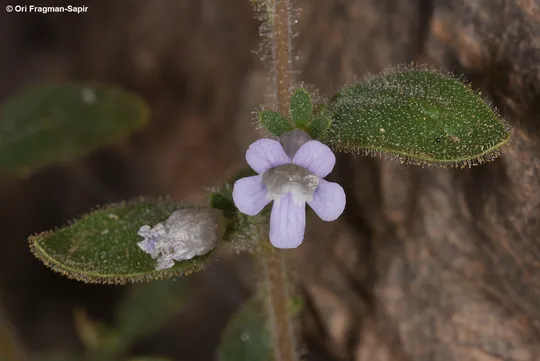
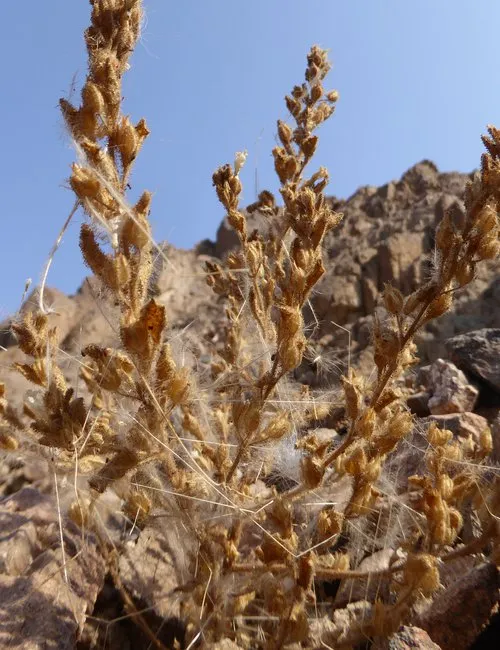
Anticharis glandulosa is a desert plant, annual during normal years and biennial in rainy years. The plant is erect, 10-19 cm tall and all its parts are sticky. Alternating leaves covered with glandular hairs, 1-2.5 cm long and 4-12 mm wide; their shape is like an inverted egg (obovate). Few flowers are located in the axil of the upper leaves. The number of flowers that bloom simultaneously is 2-8. The 10-12 mm corolla is horn shaped and azure. The calyx is divided into five lobes to its base, and is 5 mm long. The corolla is longer than the calyx and its tube opens gradually into a limb divided into five lobes. The corolla’s position is almost horizontal and is adapted for pollination by large bees. The flower is bisexual: two stamens and a single style whose stigma is marble shaped. Fruit is a pointed capsule (like many in the family Scrophulariaceae) that opens into two valves. The capsule is 1.5 times longer than the sepals and has numerous small seeds. According to the analytical flora (Feinbrun and Danin, 1991), A. glandulosa blooms from January to March and sometimes in September. From our experience, it germinates and flowers after strong rainstorms in all seasons (however, the major rains causing flooding and germination are during autumn and spring). Because strong rain is very rare in the Eilat region, there is no solid information regarding its characteristic blooming season. In recent years (1995-2005), there have been no large rainstorms in Eilat to germinate the annual plants at Mount Zefahot, and therefore A. glandulosa was not seen during these years. In India, it blooms in the Rajasthan Desert in August-September.
Anticharis glandulosa is known in Israel from a single location in the Eilat Mountains – the
southeastern slopes of Mount Tsfahot, on the sides of the northern beach road in
Eilat, west of the Eilat Field Studies Center.
Gravelly wadis in extreme hot, arid climates in
mountainous landscapes on igneous and metamorphic rocks.
The genus Anticharis
includes 14 species found in the tropical world
from Africa to Malaysia. Most of the species are perennial herbs that grow in
savannas or forest clearings.
·
In Israel, Anticharis
glandulosa is known only from the southern side of Mount Tsfahot,
which is undergoing accelerated development and construction work. This is an
important annual plant, whose seed bank is concentrated primarily in the upper
layer (0-10 cm) of the soil. Therefore, clearing and leveling the area
surrounding buildings and roads in the northern beach area opposite Mount Tsfahot
poses a significant threat to the existence of A. glandulosa
in Israel. One example of its habitat destruction is the construction of the
Orchid and Princess hotels in locations where Anticharis
could potentially be found. The establishment of these hotels caused damage to
additional surrounding areas and destroyed the major seed bank of the local
vegetation.
The two secondary wadis descending from Mount Tsfahot
to the northern beach road should be declared reserves, in which the Anticharis glandulosa populations can be protected and
monitored (along with Lindenbergia, another
red plant that is located in Israel exclusively at this site). Most of Mount Tsfahot,
including the eastern and southern slopes, is in the process of being declared
nature reserves. An additional location should be established for A. glandulosa at the foot of Mount Shlomo or in Wadi Ya'el at
Mount Shahmon, where the demography and fluctuations of the A. glandulosa population
could be studied. Seeds for new populations could be imported from eastern
Sinai.
Anticharis glandulosa is a Sudano-Decanian species common in Arabia, Eritrea, Sudan, the African horn and east to
Rajasthan in India. It also grows in the eastern Sinai wadis.
Anticharis glandulosa is an annual or biennial Sudanese plant, which grows in the Levant
primarily in eastern Sinai in warm, arid wadis. Only one population is known
from the Eilat Mountains at the foot of Mount Tsfahot. It is threatened
primarily by construction and development, as well as by recreational activity
and the commotion at the border crossing to Sinai that is adjacent to the site.
Current Occupancy Map
| 1000 squre meter pixel | 5000 squre meter pixel | 10000 squre meter pixel | |
|---|---|---|---|
| number of observations | 0 | 0 | 0 |
| in total pixels | 0 | 0 | 0 |
| Family | Scrophulariaceae |
| Classification | On the endangered species list |
| Ecosystem | Extreme Desert |
| Chorotype | Sudano |
| Conservation Site | Southern trails of Mount Tsfahot |
| Rarity |
1
5
6
|
|---|---|
| Vulnerability |
0
2
4
|
| Attractiveness |
0
0
4
|
| Endemism |
0
0
4
|
| Red number |
1
4.7
10
|
| Peripherality | S |
| IUCN category | DD EW EX LC CR EN VU NT |
| Threat Definition according to the red book | Endangered |
 Based on:
Based on:
